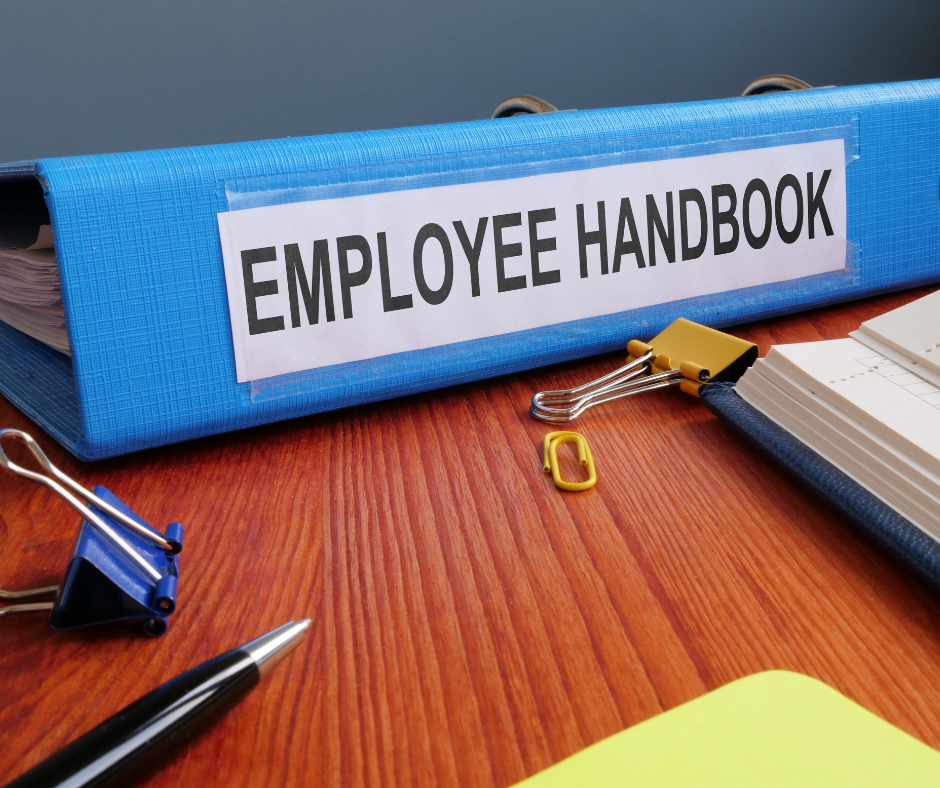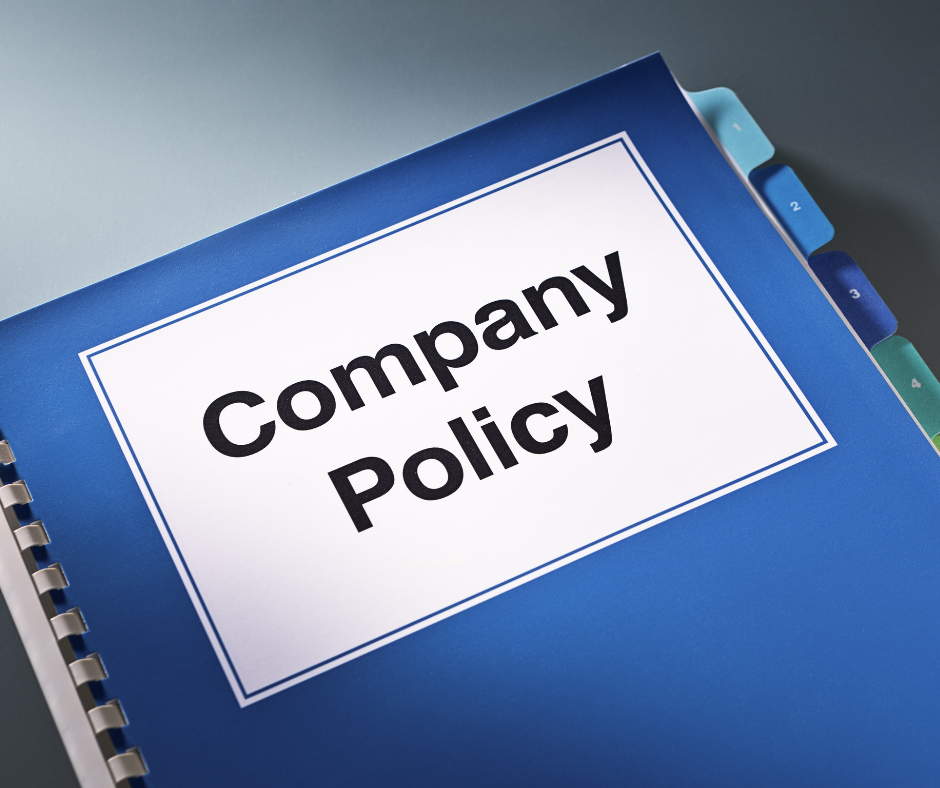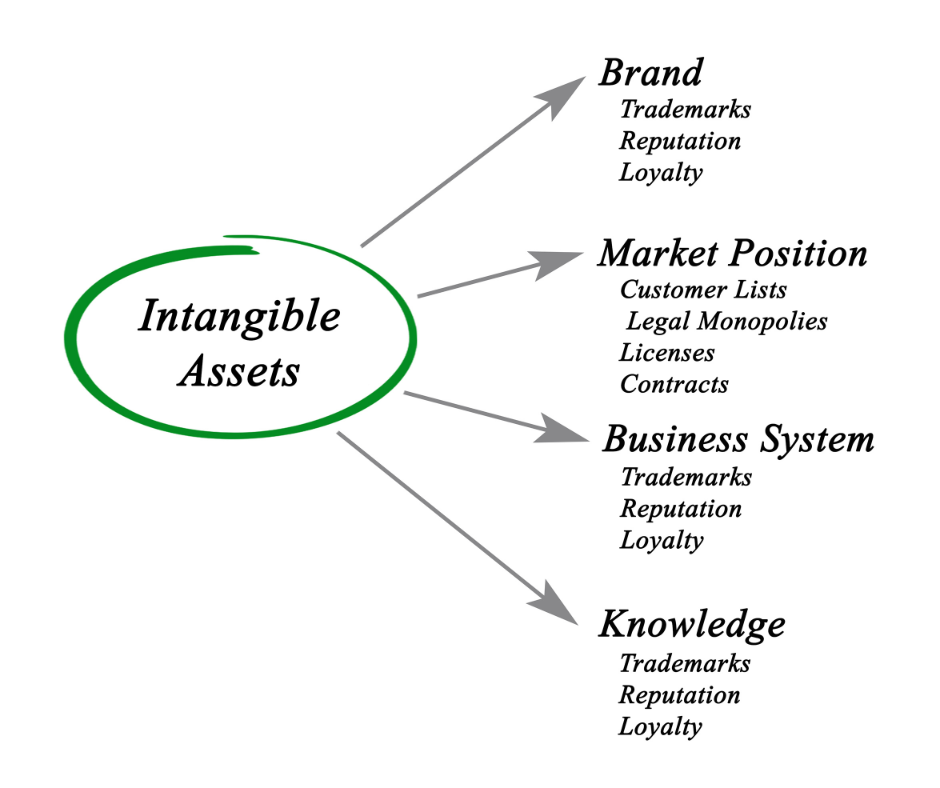
Key Takeaways:
- Employee handbooks are essential for lessors of nonfinancial intangible assets (except copyrighted works) companies as they provide guidance to employees in their day-to-day work and can help prevent legal issues.
- Employee handbooks should contain policies, procedures, codes of conduct, and information about employee benefits and work schedules. These help employees understand their rights and responsibilities, and ensure consistency across the organization.
- Creating an effective employee handbook requires legal compliance, clarity, consistency, accessibility, and periodic updates. Employers should seek legal advice to ensure their handbooks comply with relevant laws and regulations.
Do you need reliable guidance for managing your Lessors of Nonfinancial Intangible Assets (except Copyrighted Works) operations? This article will provide you with best practices for creating an effective employee handbook. With it, you ll unlock key information to help you understand the necessary laws and regulations.

Importance of Employee Handbooks for Lessors of Nonfinancial Intangible Assets Companies
Employee handbooks play a vital role in guiding standard workplace practices and policies for Lessors of Nonfinancial Intangible Assets (excluding Copyrighted Works) organizations. A well-structured handbook establishes expectations from employees and protects from litigations. Critical points like code of conduct, work schedules, employment benefits, leaves, and grievances should be clearly defined. It also enhances transparency, improves communication and clarity on company goals, responsibility chart, and proper dispute resolution methods.
Incorporating employee handbooks for Lessors of Nonfinancial Intangible Assets companies creates an effective approach in the organizational hierarchy. The employees can easily connect and work cohesively towards company objectives. Besides, Employee handbooks for Machinery Manufacturing companies demonstrate the importance of the internal policies formulated for the particular niche.
A report by the Bureau of Labor Statistics shows that organizations with well-crafted employee handbooks have a lesser risk of losing any litigations filed by employees.

Content of Employee Handbook
For a successful employee handbook, you need to include all the significant aspects of working in your company. To create the contents of the handbook, begin with the ‘Content of Employee Handbook’ section. This should consist of:
- Policies and Procedures
- Code of Conduct
- Employee Benefits
- Work Schedule
- Conflict Resolution
These subsections will ensure that your employees know the rules and expectations of your business.
Policies and Procedures
The guidelines and protocols that are implemented by an organization for its workforce fall under the category of Workplace Standards. These standards serve as a set of expectations and directives for employees to follow while they work on company premises or conduct any official tasks related to the company. The policies and procedures mentioned in these standards will vary according to the nature, size, and objectives of each company.
In a Lessors of Nonfinancial Intangible Assets (except Copyrighted Works) firm, the Workplace Standards can include various policies such as anti-discrimination, equal employment opportunity, safety regulations, attendance requirements, dress code guidelines, social media usage criteria, conflict resolution protocol, performance measurement procedures, etcetera. As these companies operate based on non-financial assets like patents or trademarks licensing instead of tangible products like goods or services, their Workplace Standards might emphasize intellectual property protection measures.
It is crucial for every employee to understand the Workplace Standards that apply to them thoroughly. Hence it is recommended to go through them with care before beginning their duties at the firm. Pro Tip: Organizations should review their Workplace Standards regularly and make changes in case there are any legal or structural modifications within their operations or business environment. Looks like we’re going to need a code of conduct for all the rogue intangible assets floating around here.
Code of Conduct
Creating an Ethical Environment in the Workplace Creating a culture of integrity and ethical behaviour is paramount for all Lessors of Nonfinancial Intangible Assets (except Copyrighted Works) companies. The Code of Conduct plays a vital role in ensuring that employees understand the expectations around behavior, decision making, and treatment of fellow colleagues. Adhering to these company values can help avoid costly legal liabilities. The Code of Conduct must outline specific policies that promote employee accountability for their behavior and actions. Additionally, it should cover topics such as conflicts of interest, diversity and inclusion, health and safety regulations, harassment policies, and acceptable technology use. It should be accessible to all employees and reviewed at least annually to assess its effectiveness. Exceptional compliance with the company’s ethical standards has benefits for everyone involved; enhancing employee morale, increasing customer trust and loyalty, reducing turnover rates while simultaneously avoiding potential legal disputes. It is therefore crucial that employers invest time into creating a comprehensive Code of Conduct tailored specifically to their company’s unique needs one that outlines clear expectations on how employees are expected to conduct themselves while at work. In 2016 Harry Valetti was sentenced to 24 months in prison after admitting he paid bribes to secure projects from various state-owned businesses. His employer had not put in place systems or controls requiring business dealings within legal parameters. As evident from this case study adequate implementation of ethical practices can prevent such costly outcomes thus reinforcing the need for stringent codes of conduct that clearly communicate corporate values and expectations to all employees.
Working here may not come with a private jet, but at least our employee benefits don’t require a magnifying glass to read.
Employee Benefits
As part of the comprehensive package offered by Lessors of Nonfinancial Intangible Assets (except Copyrighted Works) companies, a plethora of perks come under Employee Compensations. These entail:
- Health and wellness programs
- Retirement savings plans like IRAs, Roth IRAs, and 401(k)s
- Income protection through life and disability insurance
- Paid time off for vacation, holidays, sick leave, and personal days
Employees receive many other benefits apart from these. However, it depends on the company’s policy regarding job designation, type of employment contract – permanent versus conditional supported by employer size. It is essential to know about all the available compensations as they not only create a sense of loyalty among employees but also enhance morale and help in talent acquisition. Don’t miss out on valuable employee benefit schemes! Enquire now to avail yourself of the numerous amazing offers provided in our employee compensation package. Get your daily dose of monotony with our work schedule – guaranteed to make you question the meaning of your existence.
Work Schedule
The employee guide for Lessors of Nonfinancial Intangible Assets (except Copyrighted Works) includes guidelines regarding time allotment. The manual outlines specifics such as working hours, breaks, and obligations to maintain a healthy work-life balance. Clear expectations are set regarding punctuality and attendance. These instructions aim towards enhancing productivity while respecting employees’ personal lives. Additionally, the document provides great detail about the work schedule. It explains how much paid vacation or leave employees are entitled to, how overtime is accounted for, and what happens in case of emergency absences. Employers are encouraged to provide flexible working arrangements when possible to support their team members’ needs. It’s worth noting that these policies were developed through extensive consultation with company personnel prior to being officially included in the employee handbook. By doing so, clarity and authenticity were assured, giving confidence that all parties would benefit from such requests. Because nothing says ‘let’s resolve this peacefully’ like flipping to the conflict resolution section in an employee handbook.
Conflict Resolution
Resolving Disputes in the Workplace When conflicts arise among employees, it is essential to have a well-established system for resolving disputes. This includes encouraging open communication, active listening, and respect for differing perspectives. Additionally, an effective conflict resolution process should be in place that involves unbiased third-party mediation if necessary. It is essential to address conflicts swiftly because left unresolved could affect employee satisfaction and productivity, leading to turnover and loss of valuable employees. Did You Know? Resolving workplace disputes can prevent legal issues like lawsuits or liabilities against the company if they aren’t addressed promptly. California’s Department of Industrial Relations has published its own guide on how employers must approach addressing harassment claims among employees.
Creating an employee handbook is like making a budget – no one really wants to do it, but it’s necessary for the survival of the company.

Guidelines for Creating Employee Handbook
For an effective employee handbook, certain guidelines must be followed. This includes:
- Legal Compliance
- Explanation of laws and regulations relevant to the company and its employees
- Company policies on discrimination, harassment, and codes of conduct
- Clarity
- Clear and concise language that is easily understood by all employees
- Definitions of any technical or professional terms used in the handbook
- Consistency
- Uniform policies and guidelines across all departments and job roles
- Clear procedures for handling violations and disciplinary actions
- Accessibility
- Availability of the handbook in print and electronic formats
- Easy access to the handbook for all employees, including remote workers
- Periodic Updates
- Clear guidelines for updates and revisions to the handbook
- Regular reviews and updates to ensure compliance with changing laws and regulations
Legal Compliance
Ensuring Adherence to Legal Requirements It is crucial for companies in publishing industries (except internet) to comply with legal regulations. Compliance with employment laws, including federal and state labor standards, should be documented in the employee handbook. Harassment, discrimination, workplace safety, drug and alcohol use, and other important legal policies should also be detailed in the handbook. To foster compliance among employees, it is recommended that businesses regularly review their policies and guidelines to ensure they adhere to all current regulations. Companies should consult with an attorney or HR professional if necessary to stay up-to-date on regulatory changes. Learn more about creating effective employee handbooks for publishing industries (except internet) companies. In addition, organizations may choose to include a section on ethics or codes of conduct within the handbook. This can help reinforce company values and promote lawful behavior among staff members. By outlining the legal obligations that employees must follow in their work environment, companies can reduce risk exposure while fostering a positive organizational culture. Make sure your employee handbook is clearer than the coffee at a hotel breakfast buffet.
Clarity and Consistency
Clear and Harmonious Tone Consistency of language and tone promotes a directorial ambiance for employees. Use straightforward, plain language to explain policies, guidelines, and procedures in the employee handbook. It is essential to use friendly and professional tones, rather than condescending or rude. Simpler Construction To enhance consistency, organize the handbook using headings and subheadings that are simple for employees to read and review. With organized content, it is simpler for workers to locate policy information readily. Analogies References to other objects or analogies between actions or events may help make complicated concepts clearer to employees. Making comparisons between day-to-day activities such as banking transactions or shopping routines helps clear up misunderstandings by providing a useful reference point. Keep Industry Terminology Each company has its own jargon and unique characteristics. Use industry-specific terminology while drafting an employee handbook. By using those terms that apply specifically to your particular business type, you will prevent any confusion among your workers. Even employees with the attention span of a goldfish can navigate your handbook with ease thanks to these accessibility guidelines.
Accessibility
This section focuses on making the company handbook accessible to all employees. Accessible documentation allows for inclusivity and ensures that every employee, regardless of their background or abilities, can easily access the information they need. Providing multiple formats such as audio, braille or large print versions would ensure that employees with visual impairments are not left out. Additionally, using plain language and avoiding technical jargon would support the comprehension of non-native speakers. To make the handbook digitally accessible, incorporating screen reader compatible features and HTML tags is necessary. As no two companies are alike, unique considerations should be taken to provide a handbook that caters to respective business needs. It is important to engage human resources to ensure compliance with legal requirements while designing the handbook content for formatting and usability best practices. Just by providing accessibility options for your employee handbook might help you cultivate not only an inclusive but also a diverse workforce – important components of a successful organization. Assistive technology has long been proven valuable in promoting ease of access for people living with disabilities; some organizations have incorporated voice command functions into their more recent digital handbooks – allowing employees with physical limitations to operate them effortlessly. Accessible employee handbooks help guarantee fairness which is crucial towards attaining healthy workplace culture between employees and employer organizations- ensuring everyone has an equal shot at success from induction onboarding materials to everything “employee-related,” like ethics policies, HR policies among others. Updating your employee handbook is like changing a tire on a moving car- it’s a necessary hassle that you can’t avoid.
Periodic Updates
To keep your handbook up to date, it’s important to regularly review and revise policies and procedures. Stay compliant with industry regulations and ensure that your company’s values are accurately reflected in your policies. Implementing regular training sessions for employees on updated policies is also crucial to maintain consistency throughout the organization. In addition, seek feedback from employees on any areas of improvement or changes they would suggest. By taking a proactive approach to periodic updates, you’ll save time and headaches in the long run. Your handbook will remain a relevant tool for new hires and existing employees alike, providing a reliable source for company policies and expectations. It’s also a good idea to appoint someone responsible for updating the handbook, ensuring all changes are properly communicated across the organization. This person should be knowledgeable about company policies and understand how they align with industry regulations. For instance, a non-financial intangible asset company found itself navigating choppy waters when an employee file was misplaced due to an outdated policy in their handbook. After diligent research, reviewing industry regulations and consulting legal experts, the company revised their policy on keeping physical copies of employee files. Thanks to their proactive approach to periodic updates, they were able to avoid further issues while ensuring compliance with industry standards.
Some Facts About Employee Handbooks for Lessors of Nonfinancial Intangible Assets (except Copyrighted Works) Companies:
- Employee handbooks provide essential information on company policies, expectations, and benefits. (Source: HR Technologist)
- Employee handbooks can help protect companies from legal issues by setting clear guidelines and expectations for employees. (Source: The Balance Small Business)
- Employee handbooks should be periodically reviewed and updated to ensure they reflect current laws and company policies. (Source: SHRM)
- Employee handbooks can improve communication and consistency within a company by providing a centralized source of information for employees. (Source: Insperity)
- Employee handbooks should be easily accessible to all employees, either online or in print. (Source: Indeed)
FAQs about Employee Handbooks For Lessors Of Nonfinancial Intangible Assets (Except Copyrighted Works) Companies
What are Employee Handbooks for Lessors of Nonfinancial Intangible Assets (except Copyrighted Works) companies?
An employee handbook for lessors of nonfinancial intangible assets (except copyrighted works) companies is a document that outlines the company’s policies, procedures, and expectations for its employees. The handbook serves as a guide for employees, providing them with information on their rights and responsibilities and helping them understand what is expected of them in the workplace.
Why do Lessors of Nonfinancial Intangible Assets (except Copyrighted Works) companies need Employee Handbooks?
Employee handbooks are an essential tool for lessors of nonfinancial intangible assets (except copyrighted works) companies because they help to ensure that all employees are aware of the company’s policies and procedures. Handbooks also help to protect companies from legal liability by clearly outlining their expectations and policies in writing, and providing documentation in case of disputes or legal action.
What should an Employee Handbook for a Lessors of Nonfinancial Intangible Assets (except Copyrighted Works) company contain?
An lessors of nonfinancial intangible assets (except copyrighted works) company should contain a range of information, including policies on attendance, employee conduct, harassment, discrimination and termination. Additionally, it should also cover the company’s benefits, leave policies, and procedures for addressing conflicts or problems in the workplace.
How often should Employee Handbooks for Lessors of Nonfinancial Intangible Assets (except Copyrighted Works) companies be updated?
Employee handbooks for lessors of nonfinancial intangible assets (except copyrighted works) companies should be reviewed and updated on a regular basis, at least once a year. It s essential to ensure that the handbook reflects any changes in company policies or state and federal regulations and laws that affect employee policies.
What are the benefits of having an Employee Handbook for Lessors of Nonfinancial Intangible Assets (except Copyrighted Works) companies?
The benefits of having an employee handbook for lessors of nonfinancial intangible assets (except copyrighted works) companies. These include providing a clear and consistent set of expectations for employees, helping to protect the company from legal liability, and increasing employee understanding of the company’s policies and procedures.
Can an Employee Handbook for Lessors of Nonfinancial Intangible Assets (except Copyrighted Works) companies be customized?
Yes. Employee handbook lessors of nonfinancial intangible assets (except copyrighted works ) companies can be customized to meet the specific needs of each company. Each company is unique, and the handbook should reflect its individual policies and procedures. It s important to have a legal team review the handbook to ensure that it is compliant with all relevant laws and regulations.